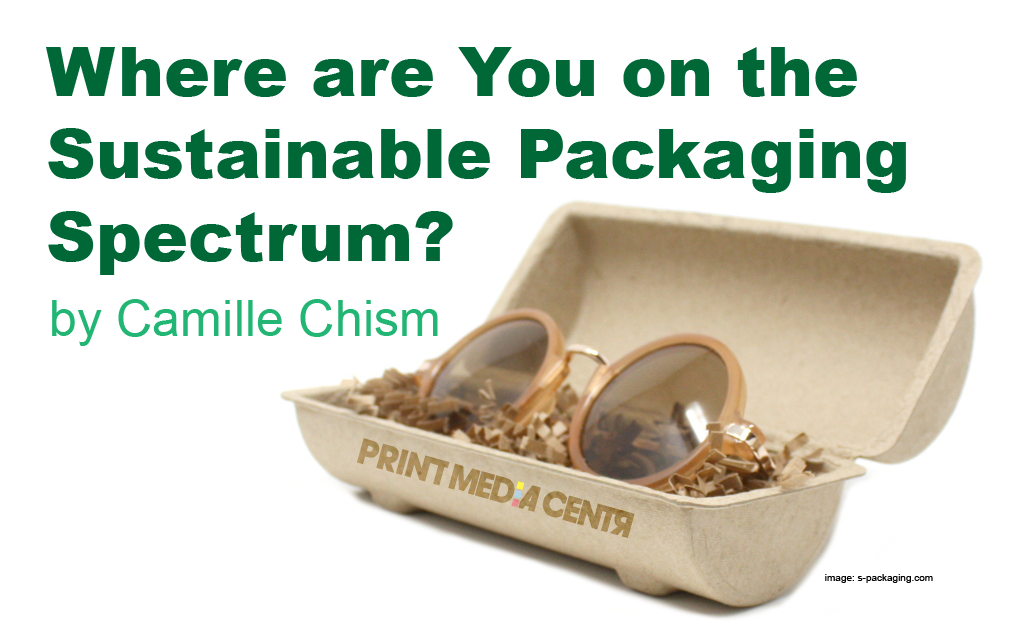The Pandemic of 2020 brought awareness to sustainable packaging. Sustainability may be a new concept to the average person; however, in the print and packaging industry, this has been a high priority for decades. A series of events drove the evolution towards sustainable packaging. Initially, trash was simply buried, burned, or dumped. Packaging waste increased during the industrial revolution and plastics were marketed as convenient and disposable in the 1960s to increase plastic manufacturing.

A decade later, the increased use of disposable packaging and other litter led to Public Service Announcements (PSAs) related to conservation and litter, suggesting a limit to the amount of trash that could be handled, and the responsibility to protect the earth was in everyone’s hands. The 1980s spawned diametrically opposed messaging based on convenient consumerism and environmental justice, mainly related to CO2emissions and conservation. The 1990s ushered in the term “environmentally friendly”, which became a buzzword, and the term greenwashing, coined in the mid-1980s became prevalent. This era was followed by the green movement, and finally, the more holistic concept of sustainability came into focus, where we are today.
The ability of the US to ship waste overseas masked the growing crisis for decades until restrictions of plastic and paper imports to China became a catalyst for consumers to become more aware of sustainable packaging. Additionally, education of and exposure to the worldwide issues of waste, such as floating garbage islands in the ocean further increased awareness. The sharp increase in the waste stream over the last year during the COVID-19 pandemic is not going away and must be addressed.
Now that people are very interested and actively educating themselves on sustainability, it is important to realize some current trends may not be as sustainable as they appear to be. Sustainability is a continuous process and consists of more than selecting a package that looks natural, sustainability incorporates knowing the impact in all aspects of life and product development.
With that in mind, below is a chart to use as a guide to determine where you stand personally as a consumer, as well as from a print and packaging development standpoint. This spectrum ranges from consumption of widely used items and waste without examining the long-term consequences, to making conscious decisions and planning sustainable practices, including packaging and the entire value stream.
Where do you fall on this spectrum and where do you strive to be? This is a continuous journey and a process, as technology changes and more data is available, your position will change on the spectrum. Remember, the goal is to move as many activities to the Sustainability Steward Column as possible. You may decide to incorporate specific actions that are important to you.

Listen to this Podcast From The Printerverse with PMC’s new contributor – Camille!
 Camille Corr Chism, CPPL Fellow, has a diverse background in packaging engineering, design, supply chain, project management, and new product introductions. Her experience includes a variety of industries including food, e-commerce, technology, distribution, pharmaceutical, industrial, and automotive. Earning an MS and BS in Packaging, Camille earned a Six Sigma Black Belt (2019), and a lifetime certification as a Certified Packaging Professional in 2006. She was inducted into the IoPP College of Fellows in 2014.
Camille Corr Chism, CPPL Fellow, has a diverse background in packaging engineering, design, supply chain, project management, and new product introductions. Her experience includes a variety of industries including food, e-commerce, technology, distribution, pharmaceutical, industrial, and automotive. Earning an MS and BS in Packaging, Camille earned a Six Sigma Black Belt (2019), and a lifetime certification as a Certified Packaging Professional in 2006. She was inducted into the IoPP College of Fellows in 2014.
Camille is the owner of Indigo Packaging and Consulting. She is the go-to person for all your packaging products and packaging design needs. Connect with her on LinkedIn, LinkedIn Company Page, Twitter @indigopkg, and Instagram @indigopkg











